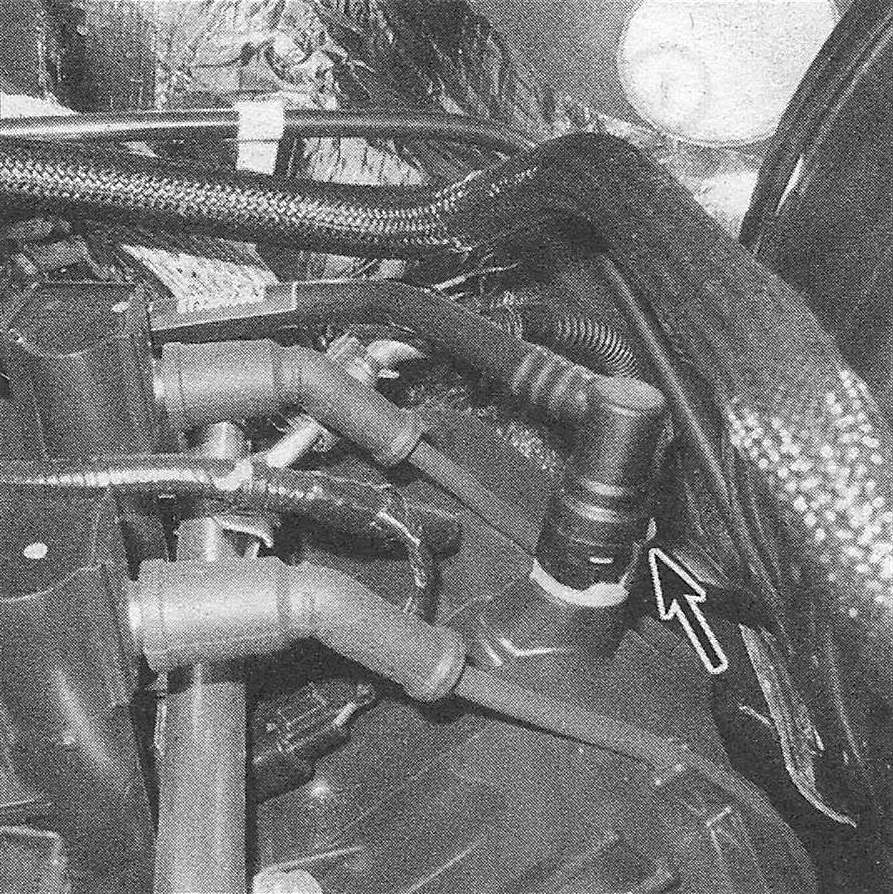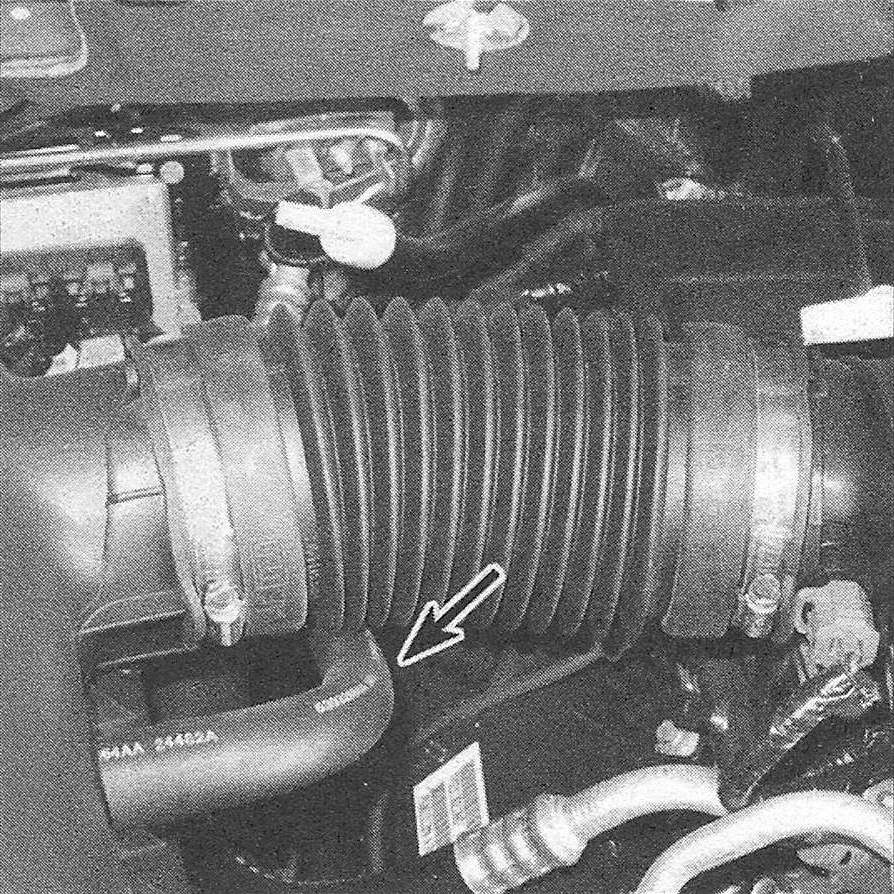Positive Crankcase Ventilation (PCV) system – general description and check
General information
Note: For specific information on how to replace the PCV valves on the engines covered by this manual, see Tune-up and routine maintenance.
1. The Positive Crankcase Ventilation (PCV) system reduces hydrocarbon emissions by scavenging crankcase vapors, which are rich in unburned hydrocarbons. A PCV valve regulates the flow of gases into the intake manifold in proportion to the amount of intake vacuum available. At idle, when intake vacuum is very high, the PCV valve restricts the flow of vapors so that the engine doesn’t run poorly. As the throttle plate opens and intake vacuum begins to diminish, the PCV valve opens more to allow vapors to flow more freely.
2. On the 3.6L V6 engine, the PCV valve is installed in the rear of the right-side valve cover. On 3.7L V6 and 4.7L V8 engines, the PCV system consists of a PCV valve, which is installed at the rear of the left cylinder head/ valve cover, and the hose that connects it to the intake system (see illustrations).
15.2a PCV valve and hose (4.7L V8 engine shown)
15.2b This hose supplies fresh air to the PCV system (3.7L V6 and 4.7L V8 engines)
3. On Hemi engines, the PCV system consists of a fresh air inlet hose and the PCV valve, which is located on the intake manifold, to the right of and behind the throttle body (see illustration). There are also internal passages connecting the PCV to the intake manifold (there is no external crankcase ventilation hose on these models).
15.3 On Hemi engines, the PCV system consists of a fresh air inlet hose (A) that connects the air resonator box (removed here) to the oil filler tube and the PCV valve (B), which is on the intake manifold to the right of the throttle body
Check
4. An engine that is operated without a properly functioning crankcase ventilation system can be damaged. So anytime you’re servicing the engine, inspect the PCV system hose (s) for cracks, tears, deterioration and other damage. Disconnect the hose(s) and inspect it/them for damage and obstructions. If a hose is clogged, clean it out. If you’re unable to clean it satisfactorily, replace it. On Hemi engines, remove the PCV valve and inspect the 0-rings for damage.
5. A plugged PCV hose might cause any or all of the following conditions: A rough idle, stalling or a slow idle speed, oil leaks or sludge in the engine. So if the engine is running roughly, stalling and idling at a lower than normal speed, or is losing oil, or has oil in the throttle body or air intake manifold plenum, or has a build-up of sludge, a PCV system hose might be clogged. Repair or replace the hose (s) as necessary.
6. A leaking PCV hose might cause any or all of the following conditions: a rough idle, stalling or a high idle speed. So if the engine is running roughly, stalling or idling at a higher than normal speed, a PCV system hose might be leaking. Repair or replace the hose (s) as necessary.
7. Here’s an easy functional check of the PCV system on a vehicle with a fresh air inlet hose and a crankcase ventilation hose with a PCV valve in it:
1) Disconnect the crankcase ventilation (PCV) hose (the hose that connects the PCV valve to the intake manifold).
2) Start the engine and let it warm up to its normal idle.
3) Verify that there is vacuum at the PCV hose. If there is no vacuum, look for a plugged hose or a clogged port or pipe on the intake manifold. Also look for a hose that collapses when it’s blocked (when vacuum is applied). Replace clogged or deteriorated hoses.
4) Remove the engine oil dipstick and install a vacuum gauge on the upper end of the dipstick tube.
5) Pinch off or plug the PCV system’s fresh air inlet hose.
6) Run the engine at 1500 rpm for 30 sec¬onds, then read the vacuum gauge while the engine is running at 1500 rpm.
7) If there’s vacuum present, the crankcase ventilation system is operating correctly.
8) If there’s NO vacuum present, the engine might be drawing in outside air. The PCV system won’t function correctly unless the engine is a sealed system. Inspect the valve cover (s), oil pan gasket or other sealing areas for leaks.
9) If the vacuum gauge indicates positive pressure, look for a plugged hose or engine blow-by.
8. If the PCV system is functioning correctly, but there’s evidence of engine oil in the throttle body or air filter housing, it could be caused by excessive crankcase pressure. Have the crankcase pressure tested by a dealer service department.
9. In the PCV system, excessive blow-by (caused by worn rings, pistons and/or cylinders, or by constant heavy loads) is discharged into the intake manifold and consumed. If you discover heavy sludge deposits or a dilution of the engine oil, even though the PCV system is functioning correctly, look for other causes and correct them as soon as possible.


